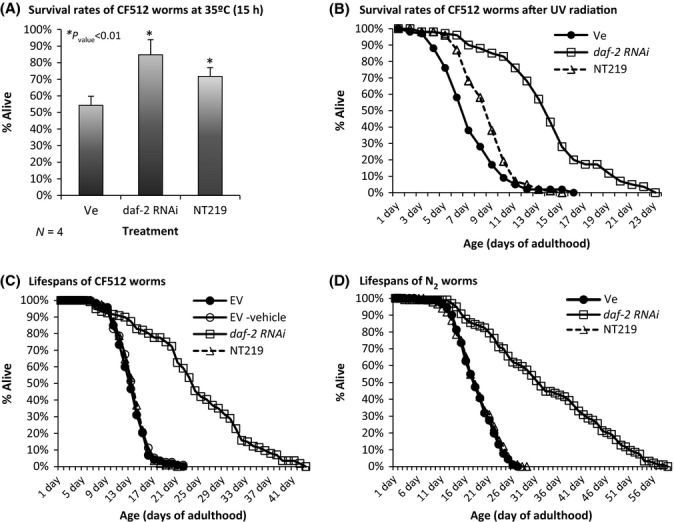Figure 5.

NT219 elevates stress resistance but has no effect on lifespan. (A) NT219-treated CF512 worms exhibit significantly elevated survival rate (71.7%) after 15 h of exposure to 35°C compared with their vehicle-treated counterparts (54.3%, Pvalue = 0.008) but lower than daf-2 RNAi-treated animals (84.8%, Pvalue = 0.0001). (B) CF512 worms were treated as in A, exposed to sublethal UV dose, and their survival rates were recorded daily. NT219-treated animals lived longer than vehicle-treated worms (8.76 ± 0.21 and 7.03 ± 0.22 days, respectively, Pvalue = 2.36E-8) but less than their daf-2 RNAi-treated counterparts (13.89 ± 0.41 days). (C) Untreated worms (black circles), NT219-treated animals (triangles), and their counterparts that were supplemented with the chemical vehicle (open circles) exhibit indistinguishable lifespans. daf-2 RNAi-treated worms were long-lived (squares). (D) The lifespans of wild-type worms (strain N2) were not affected by a daily NT219 treatment.
